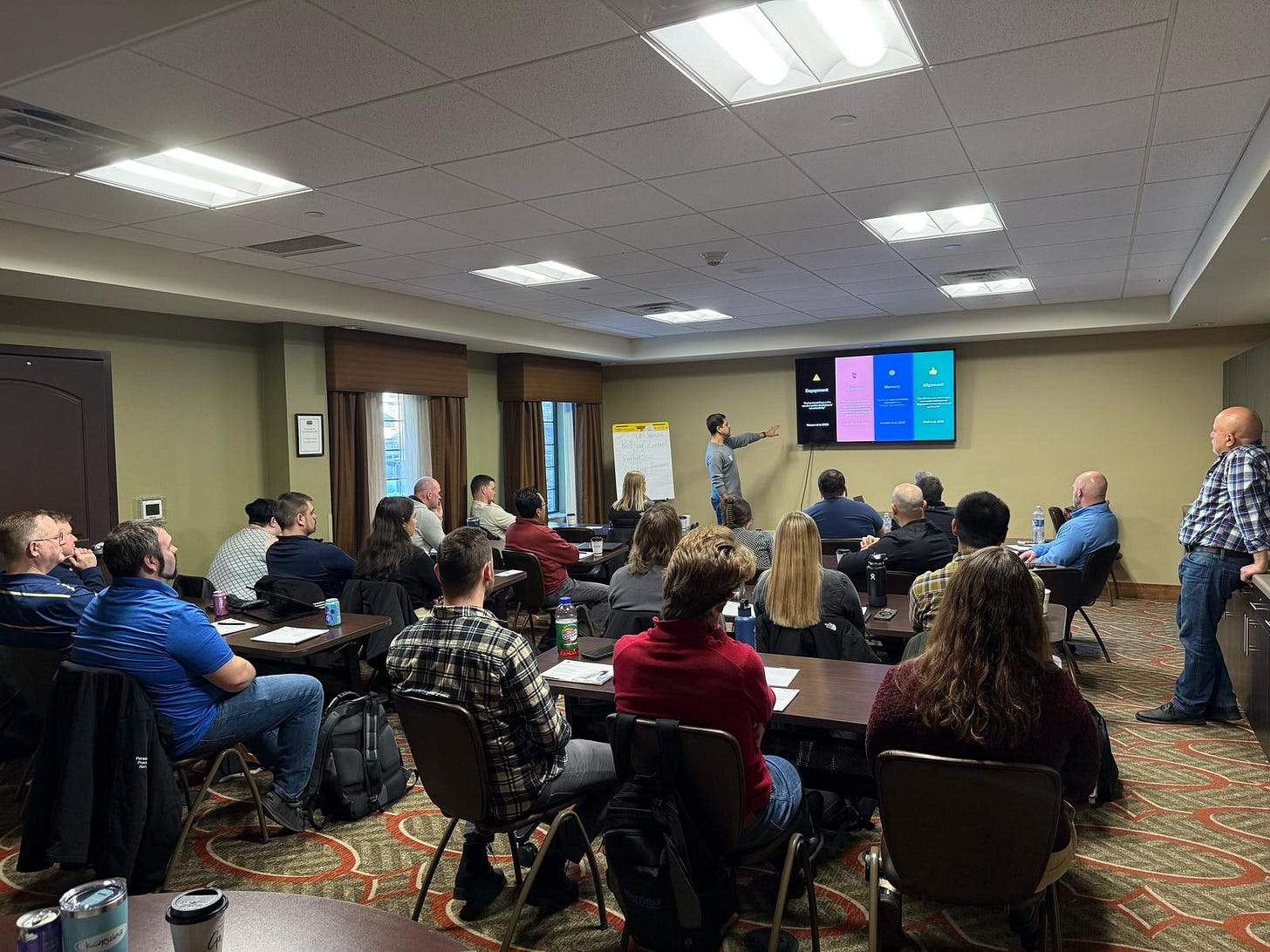Today: Andrés shares some ideas on how to become a more strategic PowerPoint user
👋 Hey! Welcome to Astrolab’s weekly newsletter on how to become a better communicator at work.
How much of your week do you spend creating, reading, refining, or discussing slide decks (PowerPoint presentations, Canva links, Google Slides PDFs)?
For me, the answer is between one-third to half of my time. This makes me think that if I’m dedicating so many hours to this, I’d better use them well.
In this text originally published in Spanish a couple of years ago in our blog, I try to answer the question What is the purpose of a slide deck?
The topic interests me because few things frustrate me as much as a presentation based on a boring, confusing, and lengthy slide deck.
On the other hand, a good slide deck can become a valuable asset in your influence processes: if well-crafted, it helps to:
Guide the conversation,
Open spaces for discussion, and
Even energize tired audiences (good design works because it functions effectively).
Until the 1980s, creating a digital slide deck was very challenging; you had to use transparencies, overhead projectors, or hand-draw your presentation.
In 1984—a year that gave us Mark Zuckerberg, Apple’s “1984” commercial directed by Ridley Scott, the book by George Orwell that inspired the ad… oh, and me!—an entrepreneur began developing a solution that would change this forever.
A new tool
In 1984, Robert Gaskins started working on software aimed at replacing overhead projectors as presentation support tools. The software was called Presenter, and in 1987, Apple invested in Forethought, the company behind it.
A few months later, Microsoft purchased the company for fourteen million USD. By then, the software had been renamed PowerPoint due to intellectual property issues.
In 1991, just four years later, a Dilbert cartoon mentioned the concept of a computer-related presentation:
Nine years later, Adams depicts a situation where someone uses a computer to project a presentation:
Now what?
What was the intention behind creating PowerPoint, according to Gaskins, the software’s creator? Who was his target audience?
In his autobiography, Sweating Bullets, Gaskins explains that PowerPoint emerged as a tool for sales and marketing but gradually permeated other work areas.
In the late 1990s and early 2000s, some thinkers began to criticize the tool’s use, reminding the corporate world that PowerPoint was just one more tool to achieve effective communication of an idea.
In 2003, Edward Tufte—a Yale professor—published a book demonizing the use of PowerPoint.
Steven Pinker defended the software, according to an email quoted in this Wall Street Journal article:
Any general opposition to PowerPoint is just silly. It’s like denouncing lectures: before horrible PowerPoint presentations existed, there were terrible lectures.
The problem wasn’t using PowerPoint, writes Pinker, but using it poorly. And it’s generally misused when we’re unclear about its purpose.
The Objective of a Slide Deck
Here’s a hypothesis:
We create slide decks to make it easy for the audience to follow, understand and remember what we’re saying.
Rather than viewing them as vehicles that transport substance to pour over others’ heads—what a strange analogy; it even made me uncomfortable—see them as tools that can help show others what you’re seeing and perceiving.
Use a slide deck to make the conversation more transparent, to energize your audience, and to give visual coherence to the narrative you’re trying to convey.
But don’t poison your listeners with too much information:
If you want to learn how to build better slide decks—because you now understand how crucial they are for effectively communicating your ideas—then you need more than just good design.
A slide deck is not just a collection of slides; it’s a tool to guide conversations, influence decisions, and help your audience see what you see.
If your message isn’t clear, simple, and engaging, even the best-looking slides won’t save your presentation.
Enter Let’s be Clear.
The Ad
As you’ve read in the past editions of INFLUX 🪐, we’re launching Let’s be Clear, our workshop where you’ll learn to
✔️ Structure your ideas in a way that makes sense to your audience
✔️ Make your messages clear, simple, and memorable
✔️ Present with confidence so your ideas don’t just get heard—they get acted upon
If you want to take your communication to the next level and start making an impact every time you speak, join us for the first-ever public edition of Let’s Be Clear.
The Details
📅 March 26th, 27th, and 28th
⏰ 2 hours, 30 minutes per day
Spots are limited, and our first 100 are almost gone. Secure yours today!
🔗 Join the program now using this link
That’s all for today! See you next week.
Andrés
Briefs
New Client Alert ⚠️: Guess who’s our newest client? It rhymes with Night Crop Soft. We’re doing a couple of workshops for them in one of their Manhattan offices. Soooo cool!
Keynotes 🎤: Óscar delivered a couple of talks in Monterrey. Having Astrolab do a talk in your organization is a great way to get to know our facilitators, our content, and our vibe (which is awesome, tbh).
INSPIRA in Wisconsin 🧀: I ran our storytelling workshop for a group of leaders that work at the nutrition business unit of Perrigo in Eau Claire, Wisconsin. But no, I didn’t try the cheese curds. Here’s a pic:





